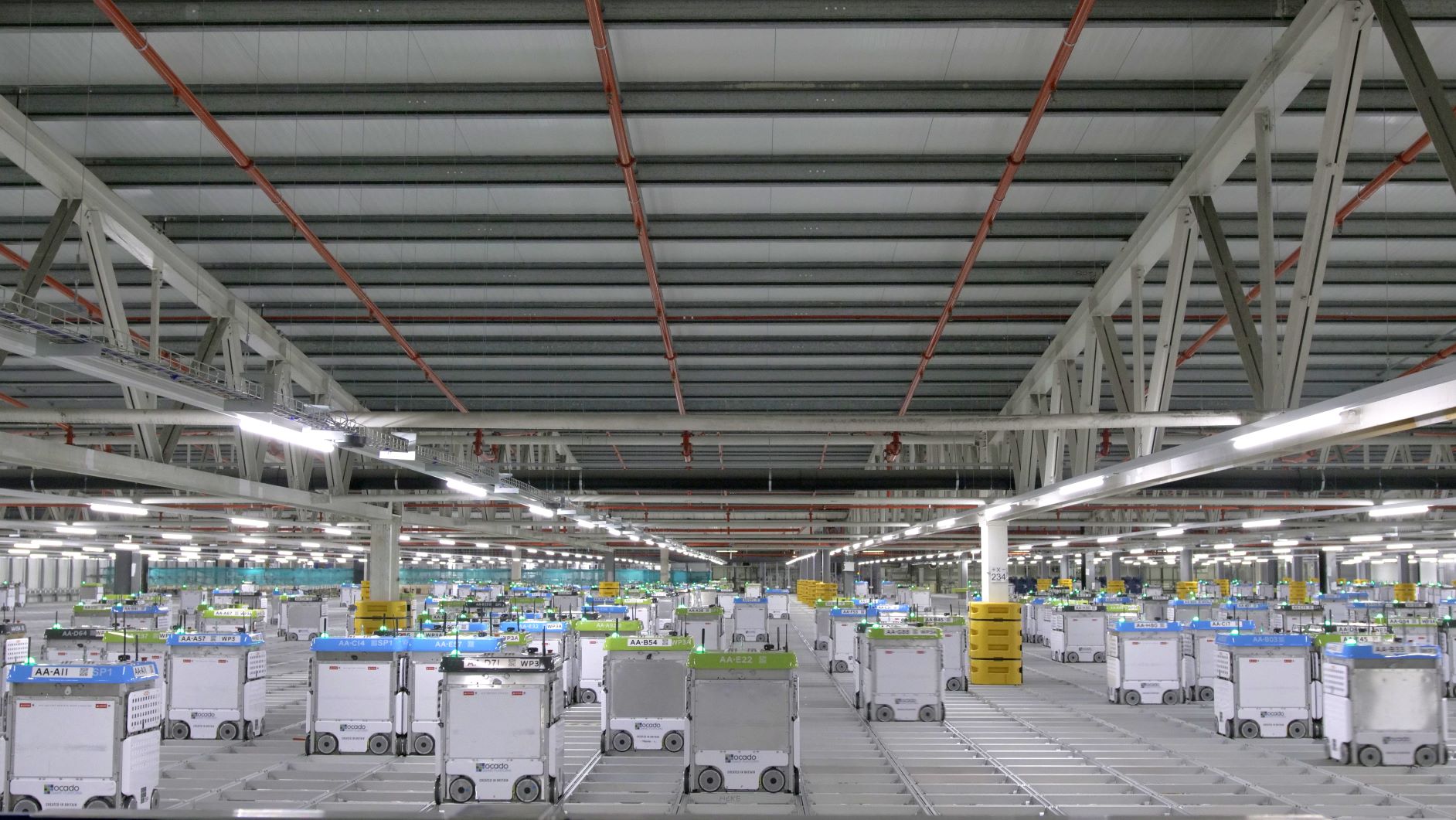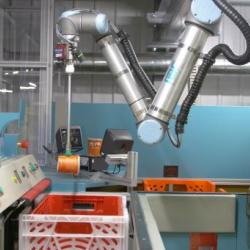
Submitted by Debra Royal on Fri, 23/08/2019 - 14:55
The Centre for Digital Built Britain’s Summer Research Showcase brings focus to the Centre’s research agenda and national academic network. Ahead of the event, on 12 September, Paul Clarke, Chief Technology Officer at Ocado, who will present the keynote, considers ‘Where physical and digital worlds collide’.
When I was a child, I remember my mother calling up our local grocery store. They knew our family, they knew what we liked, they knew the items we normally ordered, they knew what was coming in season, they could recommend things we might like to try and so on.
That body of background knowledge, and the fact that we would often just be tweaking our regular order, meant that the ordering process was quick and low friction. The store keeper would then pick the items off their shelves and the completed order would be delivered in a small van or even on a bicycle.
Then we entered the age of the supermarkets, who persuaded us to do the picking, often the packing and then the last-mile delivery to our homes. Now with online grocery delivery we are coming full circle. However, instead of your local grocer having all that knowledge and expertise, it is now being fulfilled by artificial intelligence and machine learning. And instead of a human picking groceries off shelves and then delivering the orders, it is robots that are picking and packing and – relatively soon – autonomous vehicles, drones and robots doing the delivery.
A swarm of bots picking customer orders at one of Ocado's highly automated warehouses
As the world’s largest online only grocery retailer, Ocado is a key player in this transformation. Our business is all about making the process of online grocery delivery as simple and convenient as possible for our customers. Our founding vision was to use technology and automation to do online grocery scalably, sustainably and profitably and that is what we have done. It was also part of this founding vision that once we had evolved and proven a solution for ourselves, we would then make this solution available to other retailers around the world, as we are now doing with our Ocado Smart Platform.
At the centre of our business model are huge automated warehouses, the largest and most sophisticated of their kind in the world. These pick and pack our customers’ orders before they are then shipped to their kitchen tables in one hour slots by our dedicated delivery fleet. As a disruptor, there was no template for the solution we needed to build and so we had no option but to build almost all of the underlying technology ourselves.
So over the past 18 years, we have been on a shopping trip for innovation assets – technologies, IP, data, know-how and competencies – using online grocery as the underlying vehicle for this journey. Of these, the competencies are particularly valuable because although they take time to acquire, they are a source of competitive advantage and once acquired can be used in lots of different places. Examples of these competencies include simulation, artificial intelligence and machine learning, optimisation, motion control, sensing, cloud computing, robotics and disruptive innovation.
We have always been the alchemical blend of a technology business, a retailer and a disruptive innovator, to which we have recently added being an international platform business too. The most valuable part of this is the innovation factory, where we focus on self-disruption and re-invention – easy to say but very hard to do. For us it’s not enough to innovate fast, it’s all about the first and even the second derivative – how fast can we innovate this innovation factory.
Our innovation assets know very little about groceries because they don’t need to, after all groceries are just atoms with certain properties. So we can use them to disrupt all sorts of other sectors, some of which are very far from online grocery. Some of these spinout applications include: vertical farming, massively dense automated car parks, baggage handling, parcel sortation, container ports and rail freight.
Robotic picking arm to be added into production later this year
My division, the Office of the CTO (OCTO), is focused on these applications along with other activities such as research, advanced research and the technological future-proofing of our business. Ocado’s core mission is to change the way the world shops, both with our UK retail businesses and our international platform business. However OCTO’s mission is to change the way the world stores, sorts, assembles, moves and sells atoms.
So quite a lot to do there!
Paul Clarke
Chief Technology Officer, Ocado


